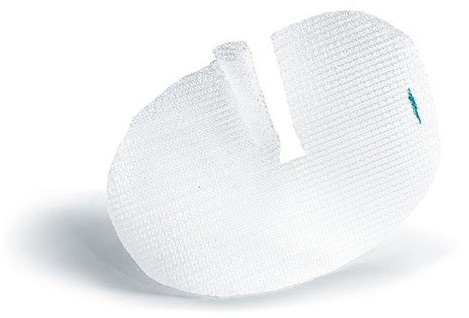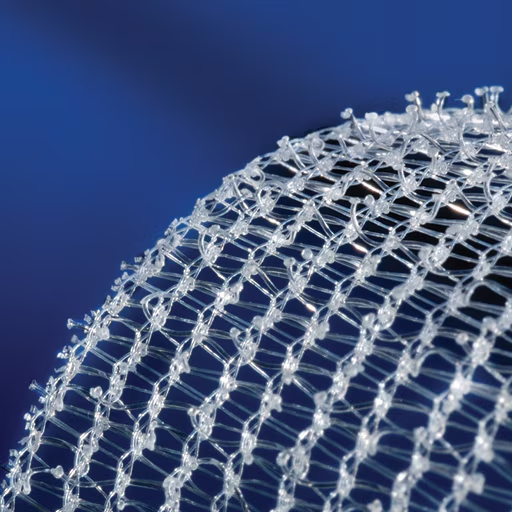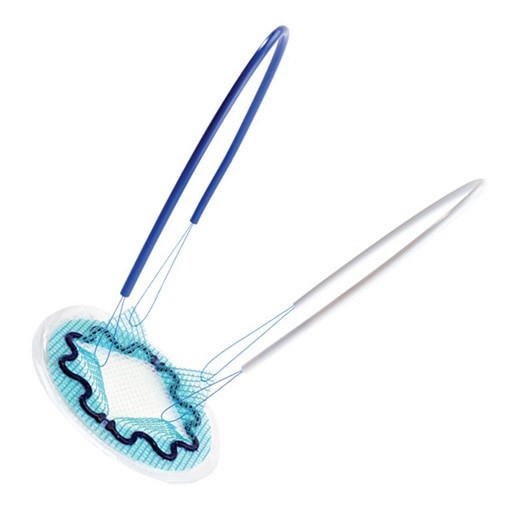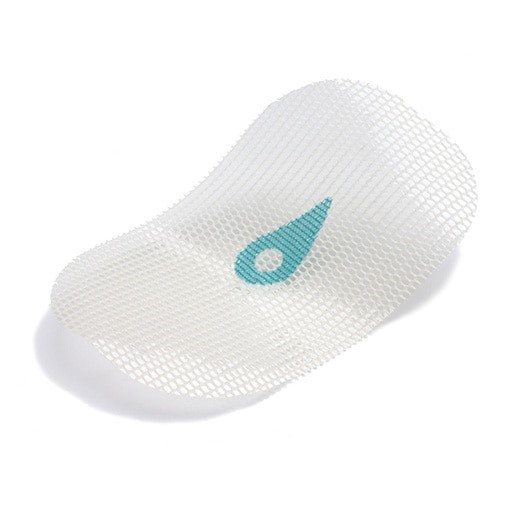Lowering the Risk of Recurrence Using Quality Hernia Meshes
Parietex ProGrip™ Self-Fixating Mesh, used in open inguinal hernia repairs.
Using the right type of mesh in hernia repairs reduces the risk of the hernia reoccurring after surgery, and 99% of surgeons use hernia meshes routinely now. We choose the hernia meshes we use to get you the excellent results you deserve.
At Hernia Clinic Hampshire, we aim to bring you peace of mind by helping you understand questions commonly asked by patients about the hernia meshes we use and why.
Mesh technology evolves at a very fast pace – faster than your mobile phone!
We believe the best hernia mesh on the market for inguinal hernias is the Medtronic ProGrip, used in our open inguinal repairs. It has a unique way of reducing tension along your repair which reduces the risk of recurrence. Patients that also follow our post-surgery advice, experience a more comfortable, pliable scar.
Frequently Asked Questions About Hernia Meshes
Answered by Consultant Surgeon James Kirkby-Bott
Q: What exactly is a hernia mesh?
A: Meshes are a material used as a scaffold to encourage the body to repair the hernia. Consider it like a plaster that has additional properties that better help the area heal. Meshes come in different sizes, shapes and materials.
The ProGrip mesh we use is made of polypropylene with a layer of resorbable polyglactic acid microgrips that integrate into the tissue around the hernia. This provides an alternative to the traditional way that mesh fixes and provides a true tension-free repair, which aids recovery and reduces chances of recurrence.
Q: What are the benefits of using a mesh?
A: As hernias cannot heal on their own, meshes are attached to the affected area to enable the repair. They are designed to
• Minimise the impact of infection
• Minimise the risk of recurrence
• Minimise the risk of long-term pain.
Q: How is the mesh fixed in place, and can it move away?
A: How it is fixed in place depends on the mesh. The ProGrip is designed to be used without any other fixation, but we can put in loose dissolving sutures, or stitches, at the critical anchor points to be certain that the mesh won’t move as the wound heals.
In laparoscopic repairs, we often do not fix the mesh because the fixation can contribute to long-term pain and discomfort. However, this can make recurrence more likely.
We have recently started using less invasive ways to fix meshes to minimise risk of both long-term discomfort and recurrence.
Mesh does move – the materials shrink in size by around 20%, although it is rare for mesh to migrate away from where it is supposed to be.
All of the steps we take and decisions we make at Hernia Clinic Hampshire are to provide you with high quality hernia treatment. We will use the most appropriate mesh and method for repair to suit your situation.
Q: Is mesh permanent or does it dissolve?
A: It depends! Most meshes don’t dissolve. Meshes that do dissolve have a higher hernia recurrence rate of around 10%.
The mesh that we use is a new kind of mesh that does not fit into either group: the ‘ProGrip’.
This mesh is composed of 2 materials: a non-dissolving sheet that acts as a good scaffold for new connective tissue to embed to, and a dissolving layer of little fasteners that help evenly spread tension over the repair area.
These fasteners can cause discomfort in the muscle. However, they dissolve from 6 months so they cannot cause long-term pain or discomfort.
Q: Can you feel the mesh/can it cause pain?
A: We don’t expect you to feel the mesh itself, but you can feel the new scar tissue and inflammation around the mesh from your repair. This can persist for around 12 months.
Some people notice the inflammation initially as a ridge under the scar. This then flattens over 2–3 months but can feel stiffer than the other side for up to 1 year.
Long-term pain tends to come from the fixation used rather than the mesh itself. A mesh placed and fixed without tension is the most comfortable – this is why we use the ‘ProGrip’ mesh and, in laparoscopic surgery, a moulded mesh that moves less.
Q: Do you have to do anything to maintain the mesh?
A: No, there is nothing you can do to influence the mesh. You can, however, influence the wound healing. It is wound healing rather than fixation that causes the most long-term discomfort.
Check out our advice on how to best recover from hernia surgery




